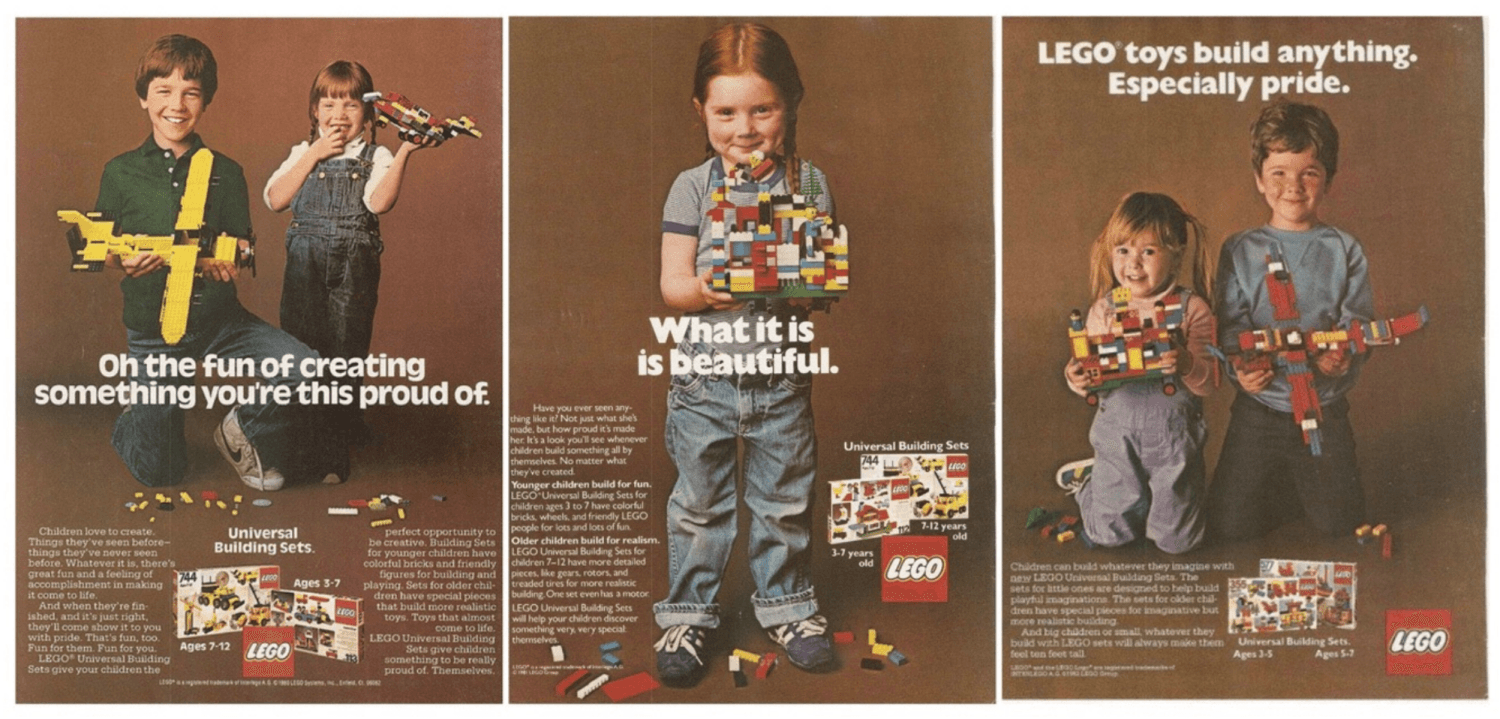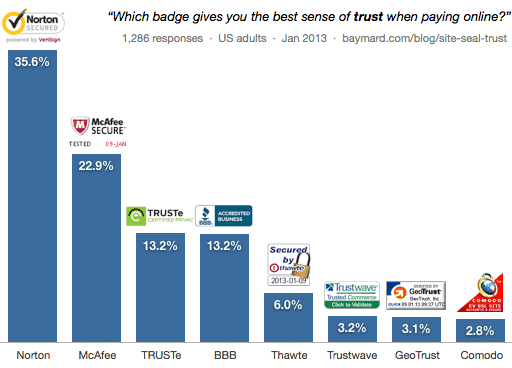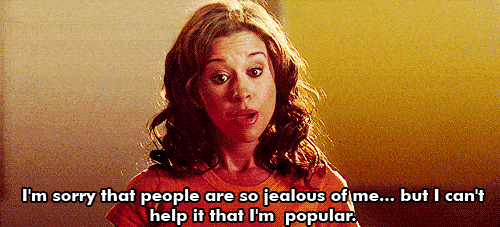Cognitive Biases in Action: Familiarity Breeds Content
by Aden Andrus • January 29, 2019
Do you consider yourself a rational, logic-driven person? Most of us do. Unfortunately, while most of us don’t want to admit it, even the best logic is usually tainted by emotions—emotions that we often don’t even realize are twisting our thinking.
In psychology, they refer to these emotional influences as “cognitive biases”.
While the existence of cognitive biases is a blow to the rational mind’s ego, if you understand them, they are actually an incredibly powerful construct for understanding yourself and your customer base. This makes them incredibly useful tools in your marketing toolbox.
Let’s take a look at what cognitive biases are, how they work and a few cognitive biases you can put to work in your own marketing campaigns!
The Power of Cognitive Biases
As consumers, we generally think of ourselves as rational people who can weigh outcomes and make the right decision. However, no matter how rational you might think you’re being during the purchasing process, we’re all largely driven by emotions.
Smart businesses know the power of emotion and use it to create ads that make people feel a certain way.
For example, do you feel unattractive, boring or old? Want to be awesome, sexy and youthful? All you have to do is drink Coca-Cola…at least, that’s what this ad communicates:

You could be like us…if only you drank Coca-Cola.
Old LEGO ads were not about the product, but the feeling of happiness and pride that comes with building something on their own:

It’s not about Nike shoes. It’s about becoming a better and greater version of yourself:

Smart marketers create ads, landing pages and campaigns that don’t just appeal to their rational brain—they appeal to their emotions. Fortunately, this isn’t rocket science. It is science, however, and cognitive biases can be easily used to improve the performance of your marketing.
The Mere Exposure Effect
Ever heard the expression, “familiarity breeds contempt”? While that certainly might be true, there’s another, similar truth that you can add to your marketing toolbox: familiarity breeds content.
Let me explain.
Over fifty years ago, Professor Charles Goetzinger ran an experiment on his OSU students. Unbeknownst to the rest of the class, he asked one of the students to come to class every day wearing a large black bag over his entire body. I’m not quite sure how he convinced the student to do this, but the student cooperated and Dr. Goetzinger was able to observe how the other students responded to this odd behavior.
What’s interesting about this experiment is the way the students’ behavior changed over time. At first, people were hostile towards the “black bag” and the student inside. As time passed, however, and the student continued to wear the black bag to class every day, that hostility was replaced with curiosity and eventually acceptance. Students even began to make friends with their mysterious classmate in the black bag.
Why? Familiarity breeds content. Our brains naturally regard new things (especially if they fall outside of our normal range of experience) as potentially dangerous or risky. But, as the newness wears off, that level of perceived risk decreases. We become more open to that new thing—even though it made us uncomfortable at first.
How the Mere Exposure Effect Works in Business
The mere exposure effect is easy to observe in the marketplace. When it come to new products or technology, most of us have to have a lot of exposure before we feel comfortable buying.
For example, the iPhone wasn’t the first smartphone. Neither was the Blackberry. The first smartphone was actually the Simon Personal Communicator:
Released in 1994—more than 10 years before the iPhone—IBM’s personal communicator had a touch screen and many of the same features and apps that we all love today. But it was new. Too new.
At the time, people weren’t really comfortable with the idea of an all-in-one device like a smartphone. They didn’t see the need for it and with a $1,100 price tag, people just weren’t that interested. The Simon Personal Communicator only sold 50,000 units in the first 6 months after its release.
The Blackberry 5810 was released in 2002 and performed better, but it was still largely seen as a gadget. But, it got people familiar with the idea of smartphones, which set the stage for Apple’s release of the iPhone in 2007.
As groundbreaking and hip of a product as the iPhone was, if Apple had released it in 1994, it almost certainly would have been a flop. It would have been too new, too revolutionary, too unnecessary, even. The mere exposure effect hadn’t bred contentment towards smartphones yet.
You see this same principle throughout our economy. When you’re thirsty and you want a fizzy beverage, do you immediately think, “I want to try something new”? Or do you usually have a craving for some familiar, comfortable drink that you know and love?
Familiar things are comfortable and safe, so our brains naturally prefer them. Known, familiar products and ideas are safe, so that’s what we’re inclined to buy—whether that’s a smartphone or a Diet Coke.
Using the Mere Exposure Effect in Your Marketing
Now obviously, you can’t wait months or years for people to become familiar with the idea of your business or product. While building brand recognition and trust is always a good idea, sometimes you just need to convince people to buy now.
The good news is, there are a few easy ways to do this with your marketing. Here are a few ideas:
Use Retargeting
Retargeting isn’t just for reminding customers about something they left in their cart. If you do it right, retargeting also helps people get more familiar with your brand, products and/or services.
This is part of the reason why retargeting ads can have much higher clickthrough and conversion rates than standard display ads. Seeing your brand everywhere builds familiarity, which often leads to an instinctive trust in your business. You’re creating cognitive biases towards your business!
Repurpose Your Content
Ironically enough, one of the easiest ways to convince someone to believe something is to tell it to them lots of times…and in lots of different ways. For example, this is how old wives’ tales get started. Someone comes to a conclusion that seems logical and tells someone else, who then tells someone else and so on until everyone is saying it. Eventually, the hypothesis becomes fact—regardless of whether or not it is true!
The more we hear, read or see something, the more familiar and more powerful it becomes. Repetition shapes our reality.
Obviously, you don’t want to brainwash your potential customers, but if you write a great blog post that really sells your product, why not expand its reach and impact by repurposing it as a video, slide presentation, infographic, podcast, etc? That way, more people will see it and your message will be reinforced to anyone who’s seen your content before.
Reshare Your Content
Along the same lines, many people won’t pay attention to your content the first time they see it. However, the more times they are exposed to it, the more familiar they become with it and the more likely they are to give it a try.
For example, if five of your friends post a link to the same video on social media, you’ll probably watch it. That’s how viral content becomes viral. It gets enough exposure that everyone starts seeing it everywhere and gets curious—which just increases the exposure.
While you can’t manufacture virality, by consistently resharing your content on social media, you can increase the exposure of your content. As people get familiar with your content, they’ll be a lot more likely to check it out.
Case in point, Buzzsumo looked at 100 million articles and found that constantly resharing articles on social media increases reach and engagement by 686%. That might not be “viral” status, but it’s certainly a big step in the right direction.
The Peltzman Effect
Back in 1975, Professor Sam Peltzman made an interesting observation about automobile safety devices. As more safety features like seat belts were mandated by law, people began to take more risks while driving. As a result, the net benefits of these safety features were smaller than anticipated.
All of that is a very long, very academic way to say something very simple: when we feel safe, we feel more comfortable taking risks.
This “Peltzman Effect” (also referred to as “Risk Compensation Theory”) describes how we respond to perceived risks. The higher the perceived risk, the more cautious we are. The lower the perceived risk, the more additional risk we are willing to take on.
The simple fact of the matter is that we don’t know how any given decision will turn out for us.
Maybe buying that house is a good idea. Maybe reading that book will be useful. Maybe dating that person will turn out to be the best decision ever. Maybe wearing that suit today will help me get the job…
Life is full of unknowns, so we have to gamble. But, because we aren’t stupid, we do our best to stack the odds in our favor.

You knew that meme had to be coming, right?
As marketers, it’s important to understand that there is some level of perceived risk to every activity. Every decision requires a commitment of some sort and commitments are a risk. So, if you want someone to decide that what you’re asking them to do is worth the risk, you need to assure them that they are making a safe bet.
How to Use the Peltzman Effect in Your Marketing
As a marketer, you automatically start in the high-risk corner of your customer’s risk-benefit calculation. Maybe your offer is as good as you say it is, but it’s hard to believe someone who gets paid to talk about how awesome their offer is.
Fortunately, there are a few ways to decrease the perceived risk associated with whatever you’re trying to get a potential customer to do. Here are a few ideas:
Include Great Testimonials
If you use them correctly, testimonials are one of the easiest ways to take advantage of the Peltzman effect. People might not trust you to be honest about your business, but if other people took a gamble on your offer and were pleased with the results, then your offer must be a safe bet, right?.
Unfortunately, because they are so easy to put together (or even fabricate), testimonials often don’t carry a lot of weight.
If you want your testimonial to be believable, you need reputable, verifiable sources.
The more important the source is, the more likely they are to protect their good name. That means they will fight to keep websites like yours from listing them as a source on their product…unless they are actually willing to endorse your product.
With that in mind, here are some ways to put together believable testimonials.
- Cite high authority sources. If other business leaders (particularly leaders of recognizable businesses in your industry) are willing to say you’re great, that must mean you’ve got something pretty cool.
- More details = more believable. If your testimonial includes enough detail (name, location, job title, etc) that it would be easy to track down your source and verify the quote, the testimonial will be more believable.
- Include pictures. Along the same lines, photos further establish the authenticity of your testimonial. After all, if your testimonial was comfortable with you using their photo, your reader can feel comfortable with giving you their business.
- Video testimonials. Video testimonials take this principle even further. Video testimonials are even harder to fake and come with the added benefits of inflection and body language. If your video testimonial shows genuine enthusiasm for the product, you can bet that your audience will be interested in your offer.
- Embed content. If you have rabid reviews on Twitter, pull them into your site. Reviews on third-party sites can’t be tweaked to perfection, so they feel more raw and real.
- Include a variety of testimonials. Everyone knows that only a small portion of your customers will be willing to put themselves out there on your behalf. So, if you have several testimonials, a lot of people must love your company (sliders are a great way to feature multiple testimonials without sucking up too much real estate on your page).
According to Reevo, customer reviews increase sales by 18%. But, you can’t just put any old testimonial up on your site.
Instead, you want to feature the kind of reviews that make your potential customers think, “You know what? I’d be stupid not to convert.”
Add Trust Seals
For many businesses, adding a trust seal is the second-easiest way to build trust on your site (right after testimonials). In fact, at this point, if you don’t have a trust seal, that may actually increase the perceived risk of converting!
Why do people like trust seals? Well, trust seals are proof that an independent third party evaluated your site and decided that your were trustworthy enough to get their stamp of approval.
Sure, you might be paying for that stamp of approval, but hey, at least you went to the effort to prove you’re respectable!
So, which badge is best?
According to the Baymard Institute, Norton Secured is considered the most trustworthy badge. However, if you’ve got issues with Norton, here’s how people perceive different badges:

Take your pick!
Case Studies
Case studies are a fantastic way to allow your potential customers to vicariously experience what makes your product or service worth buying.
In some ways, testimonials are like mini-case studies. They summarize a good customer experience in a sentence or two, providing just enough info to demonstrate that the experience was valuable.
However, many potential customers will want more details. They will want to know how your offer produced great results for your customers. Case studies give them exactly what they are looking for.
Now, not every offer needs to be justified by a case study. Even if case studies are something your audience is looking for, not everyone will read your case studies before they convert.
However, simply having case studies on your site—even ones nobody reads—helps inspire confidence in your offering. After all, somebody had a good enough experience that they were willing to let your write a whole paper about it…
Share Your Social Media Likes
As content marketing and social media become increasingly important aspects of how your website is perceived, people have begun to measure the trustworthiness of companies by their social media presence.
If you think about it, this makes sense. After all, if 1,000+ people liked your product, your offer is probably worth trying out.

To showcase your social presence, you simply need to add one of the various available plugins to your site. This will allow you to show your visitors how many people love you on social media.
Depending on how popular you are on social media, however, it may not be a great idea to show off your following on each social media platform individually.
For example, if you have 800 total likes/followers, that’s much more impressive than 200 page likes on Facebook, 300 followers on Twitter, 150 followers on LinkedIn and 150 followers on Google+.
Wait, I take it back, 150 followers on Google+ would be pretty impressive…
Conclusion
To be honest, we’ve just scratched the surface of cognitive biases. Psychologists have identified literally hundreds of cognitive biases, many of which can be used to improve the performance of your marketing.
The key is to understand how different cognitive biases affect your specific customer base’s purchasing behavior. Each customer base is unique and is influenced to different extents by different biases. But, if you take the time to figure out what factors influence their thinking, you can use that to get them to feel like your business is the best fit for them and their needs.
By the way, if you’d like help figuring out how to use cognitive biases to improve your marketing, let me know here or in the comments. I’d love to give you a hand!
What are some of your favorite cognitive biases? How have you seen these cognitive biases put to good use in marketing campaigns? Leave your thoughts in the comments.





